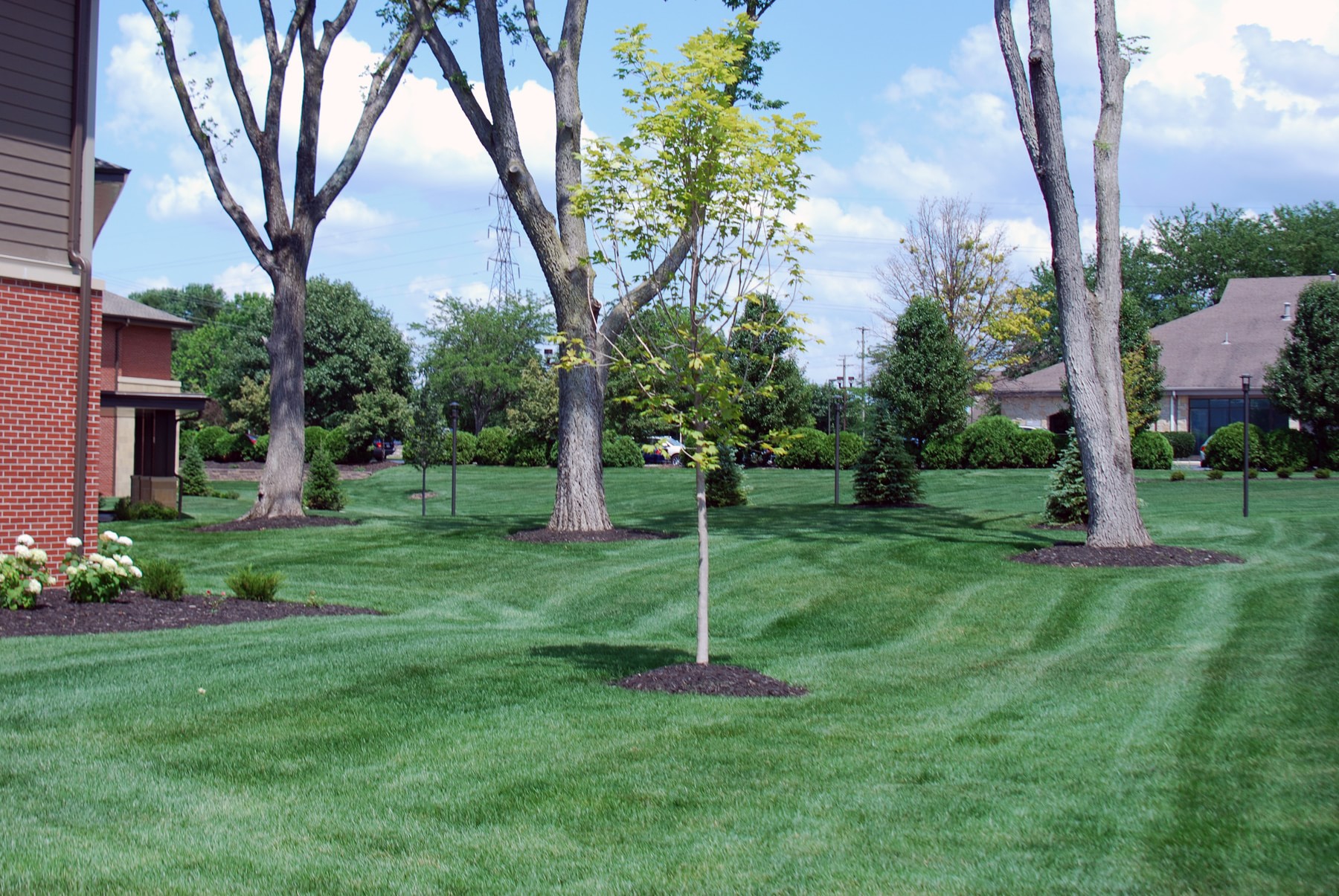Everyone loves a perfectly manicured, green and lush lawn. It takes a lot of time and effort to make sure your lawn is perfect. Sometimes however, we end up with lawns that just don’t live up to our expectations. Here are some tips on what to look for, what to do, and how to go about keeping your lawn healthy for the 2017 season.
Fertilizer
 A balanced fertilizer throughout the season will help promote new growth, keep your lawn green and extend the depth of your roots to deter drought. You want to make sure you are adding about 3/4 -1 lb of actual nitrogen per 1,000 sf in your applications. Nitrogen is what helps keep your grass green and strong. Phosphorus will help extend the depth of your roots and potassium will help benefit the health of the entire plant. Too little fertilizer or too much fertilizer may cause fungal diseases as well as cause deficiencies in the grass. Make sure you also spread your fertilizer evenly over the lawn. Too much in one spot may burn and kill your grass. Over spreading in one area versus another will cause very green grass and not so green grass giving the appearance of ‘streaking lines’.
A balanced fertilizer throughout the season will help promote new growth, keep your lawn green and extend the depth of your roots to deter drought. You want to make sure you are adding about 3/4 -1 lb of actual nitrogen per 1,000 sf in your applications. Nitrogen is what helps keep your grass green and strong. Phosphorus will help extend the depth of your roots and potassium will help benefit the health of the entire plant. Too little fertilizer or too much fertilizer may cause fungal diseases as well as cause deficiencies in the grass. Make sure you also spread your fertilizer evenly over the lawn. Too much in one spot may burn and kill your grass. Over spreading in one area versus another will cause very green grass and not so green grass giving the appearance of ‘streaking lines’.
Insect Control
There are many chemicals on the market now to help deter those pesky insects from destroying  your lawn. The number one killer of lawn areas in central Ohio is grubs. These white larvae over winter and pupate in to Japanese beetles/masked chafers and other beetles around June/July. Once these insects have mated, new eggs are laid in the lawn where these grubs grow and eat your thatch, root systems and anything else in the way of their mouths. Knowing that these insects do most of their damage around August through September you now know that you should apply your insect control around May – July. Chemicals like merit will have a 90 day residual so will help kill off any growing grubs through their growth cycle.
your lawn. The number one killer of lawn areas in central Ohio is grubs. These white larvae over winter and pupate in to Japanese beetles/masked chafers and other beetles around June/July. Once these insects have mated, new eggs are laid in the lawn where these grubs grow and eat your thatch, root systems and anything else in the way of their mouths. Knowing that these insects do most of their damage around August through September you now know that you should apply your insect control around May – July. Chemicals like merit will have a 90 day residual so will help kill off any growing grubs through their growth cycle.
Water
Watering is crucial to the health of your lawn. In order to water your lawn thoroughly and cost effectively you should water for longer periods and less frequently. This means that you should be watering about 2-4 times per week depending on your location and time of season. Water for longer periods so the water can penetrate deep in to the soil. Your lawn will require about 1-1.5″ of water per week. This means if you water three times a week, your lawn should be receiving about 1/2″ of water per watering. Of course, this is based on the time of year, the temperature, your slope and many other factors. Sometimes its just a matter of trial and error to get the right amount of water to your lawn. Nonetheless, to test how much water you are applying, take a rain gauge and place it in the middle of your irrigation rotors. See how much water is in the gauge after a cycle. This will give you your total amount of water applied in inches. 
As well as applying the right amount of water, you want to make sure you are applying water at the right times. Watering in the mid afternoon may result in more evaporation. Watering in the evening will not allow the water to dry from the leaves and may cause fungal growth and disease to spread in your lawn. Typically, early morning watering is the most beneficial for your lawn.
Aeration
Aerating your lawn in the fall is extremely beneficial. Not only does this help decrease your thatch levels but it helps promote air circulation in to the root system. It also help water to access the root systems more quickly. In all, it helps to keep your lawn healthy and is a good proactive treatment against disease and insects. Try to schedule your aerations for the fall. Spring aerations can be beneficial if your lawn is in dire need of treatment. Spring treatments however may spread weed seeds and cause more weed issues in your lawn.
Chemical treatment of Weeds
Weeds can become a nuisance in your lawn if left untreated. Many times weeds can just be dug out of the lawn. If you do need to apply a chemical treatment make sure you are using a chemical that is lawn safe. Many homeowners will use Round Up and end up with large dead patches of lawn, which will need re-seeded in the fall. Read your label! Make sure what you are using is safe for you, your family and your lawn.

